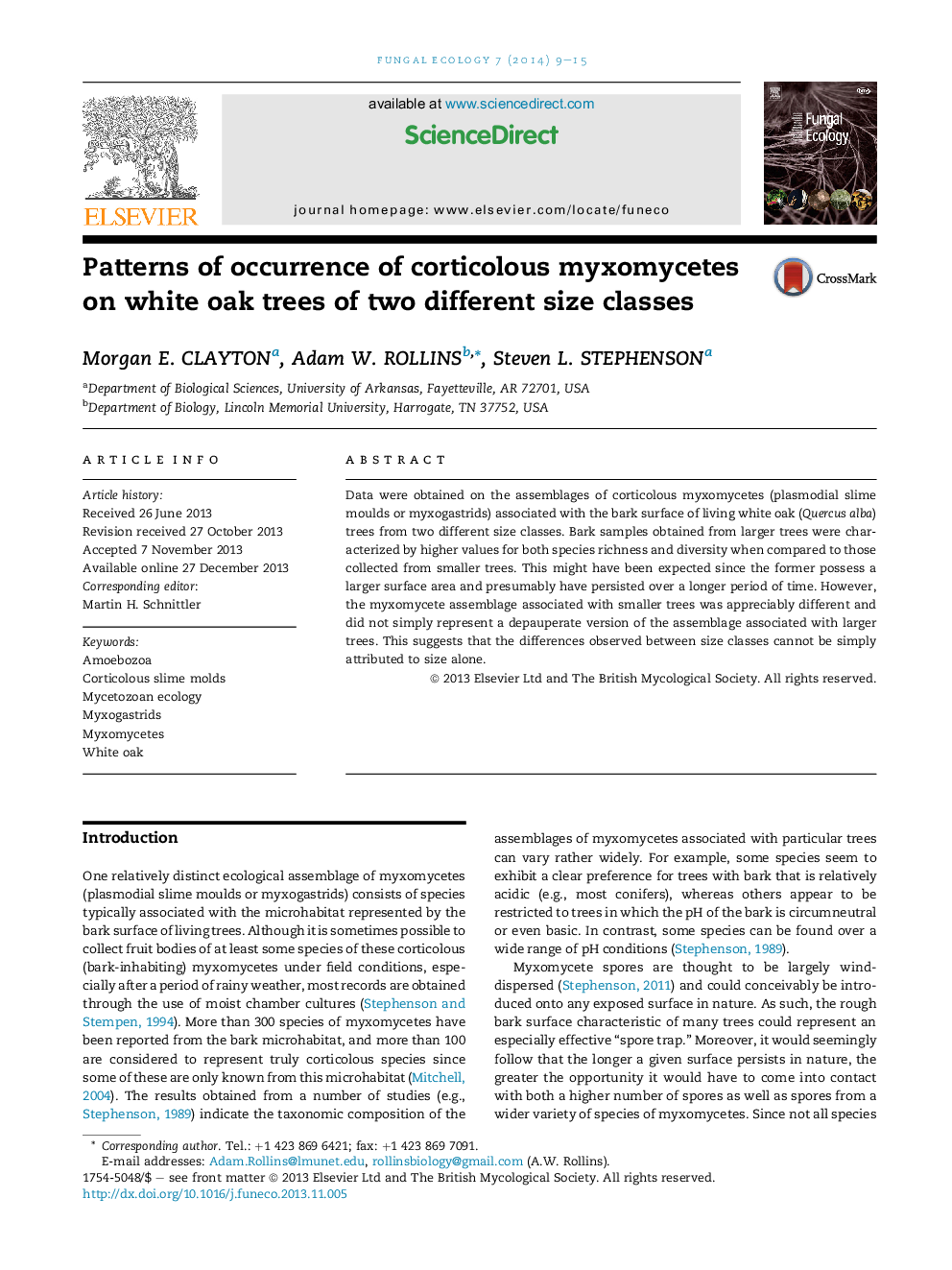| Article ID | Journal | Published Year | Pages | File Type |
|---|---|---|---|---|
| 2053562 | Fungal Ecology | 2014 | 7 Pages |
•We surveyed the myxomycete assemblages of small and large white oak trees.•Large trees were characterized by a greater richness and diversity of myxomycetes.•Myxomycete composition and structure differed between the two size classes.•Tree size alone is insufficient to explain the observed differences.
Data were obtained on the assemblages of corticolous myxomycetes (plasmodial slime moulds or myxogastrids) associated with the bark surface of living white oak (Quercus alba) trees from two different size classes. Bark samples obtained from larger trees were characterized by higher values for both species richness and diversity when compared to those collected from smaller trees. This might have been expected since the former possess a larger surface area and presumably have persisted over a longer period of time. However, the myxomycete assemblage associated with smaller trees was appreciably different and did not simply represent a depauperate version of the assemblage associated with larger trees. This suggests that the differences observed between size classes cannot be simply attributed to size alone.
